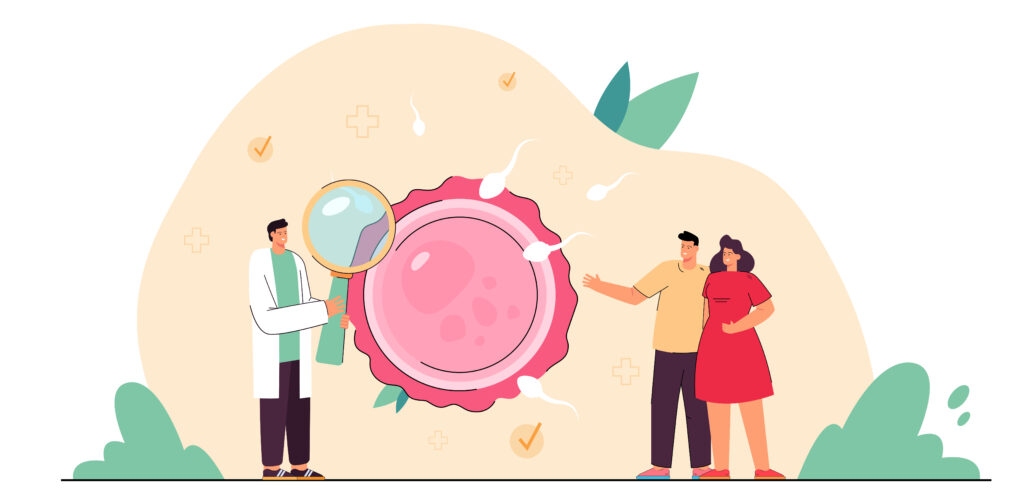What’s ICSI?
ICSI (pronounced as ick- see) also known as Intracytoplasmic Sperm Injection, is a technical form of IVF (In-Vitro Fertilization), in which a single healthy sperm is directly fitted into the cytoplasm of the egg. It’s most generally done when a couple is unfit to conceive due to manly gravidity or have endured IVF failures in the history. ICSI is used when, unlike natural generality, the sperm isn’t suitable to attach itself to the egg and fertilization doesn’t take place.
What’s the difference between ICSI and IVF?
ICSI and IVF, both are veritably common treatments for gravidity. ICSI is considered as a type of IVF but still has a crucial difference,i.e how the sperm fertilizes with the egg. Fertilization for both treatments take place in the lab, in IVF, multiple eggs and sperm are left in a petri dish to fertilize on their own. In ICSI, a single sperm is taken and directly fitted into the egg for fertilization.
Both the treatments have helped numerous infertile couples achieve the dream of parenting.
Just like in IVF, in ICSI treatment, the womanish mate is given fertility drug to stimulate the ovaries to produce multiple eggs for fertilization. Once progressed, these eggs will be recaptured and kept to be used incontinently or firmed for unborn use.
In the meantime, the sperm is taken from the semen sample collected from the manly mate. And a single healthy sperm is collected after washing it.
This sperm is also fitted into the cytoplasm of the cell with the help of a thin needle under a microscope. And this fertilized egg (embryo) is placed in the uterus of the womanish mate after 3 to 5 days, where it’ll get attached to the uterus filling for farther growth.
Why is ICSI treatment done?
Substantially used in the cases of manly gravidity, ICSI treatment is done when-
Sperm count is veritably low (Oligospermia)
Sperm has poor motility i.e. slow movement (Asthenozoospermia)
Sperm has poor morphology i.e. abnormal shape (Teratozoospermia)
Vasectomy
Preliminarily failed IVF cycle (s)
Unexplained Gravidity
Damaged or blocked fallopian tubes
Ovulation diseases
Endometriosis
Inheritable diseases
What’s the procedure of ICSI treatment?
ICSI Procedure-
Ovarian Stimulation
To stimulate the growth of follicles containing eggs, the womanish mate will be given drug. This drug will spark the ovaries to grow multiple eggs.
Egg Retrieval
After administering the final injection, the eggs will be recaptured from the ovaries and taken to the lab for fertilization with the sperm to form a zygote.
Sperm Retrieval and Selection
The semen sample is taken from the manly mate, from which sperm is recaptured. A motile sperm is named and prepared for copulation. Embryologists make sure that the sperm named is of good quality and can be fitted into the cytoplasm of the egg.
Fertilization
After both sperm and eggs have been recaptured and named, the sperm will be inculcated in the egg for fertilization, to form an embryo (s).
Culture
After fertilization, the embryo (s) will be kept for 2 to 5 days in the lab for growth.
Embryo Transfer
Once an embryo has been named, it’ll be transferred to the womanish mate’s uterus. For this, the embryo will be put inside a catheter which is passed into the uterus through the cervix, where it’s gently released to implant itself on the uterus wall. In some cases, further than one embryo is implanted.
Gestation Test
After 2 weeks of embryo transfer, a gestation test is done to check whether generality is achieved.
What’s the success rate of ICSI treatment?
ICSI is considered one of the most successful ART styles for problems related to manly gravidity. The rate of success in ICSI is around 85, couples with manly gravidity who conclude for ICSI’ve a success rate of 70 to 75. The chances of a positive outgrowth in ICSI is analogous to the probability of achieving gestation via normal sperm and other conventional styles.
ICSI success rate is high as the croaker can elect the stylish quality sperm and egg for fertilization. Still, there are certain factors that determine the ICSI success rate in India, like-the quality of eggs, age of the womanish mate, type of gravidity problem, and sperm quality.
What are the pitfalls involved in ICSI treatment?
Generally, ICSI is considered a safe procedure with minimum pitfalls. Still, there are certain pitfalls and disadvantages which should be kept in mind if one wants to conclude for ICSI treatment. They are-
A manly child born with the help of Intracytoplasmic Sperm Injection (ICSI) is more prone to fertility issues in the future. This happens due to the end of gravidity genetics from the father to the baby.
There are over to 3 chances of a major birth disfigurement in an ICSI baby. They are-Beckwith-Wiedemann pattern, Angelman pattern, coitus chromosome abnormalities, and hypospadias.
Some fertilized eggs (< 2) don’t grow into healthy embryos. This is because they might get damaged during the ICSI procedure as it’s more invasive and requires further work as compared to a standard IVF procedure.
To increase the chances of achieving gestation, multiple embryos are implanted inside the uterus of the woman, so that at least one embryo can develop duly. Still, this increases the chances of multiple gravidity.
Multiple gravidity can further increase the chances of complications like-early labour, high blood pressure, gravid diabetes and the need for a c- section.



